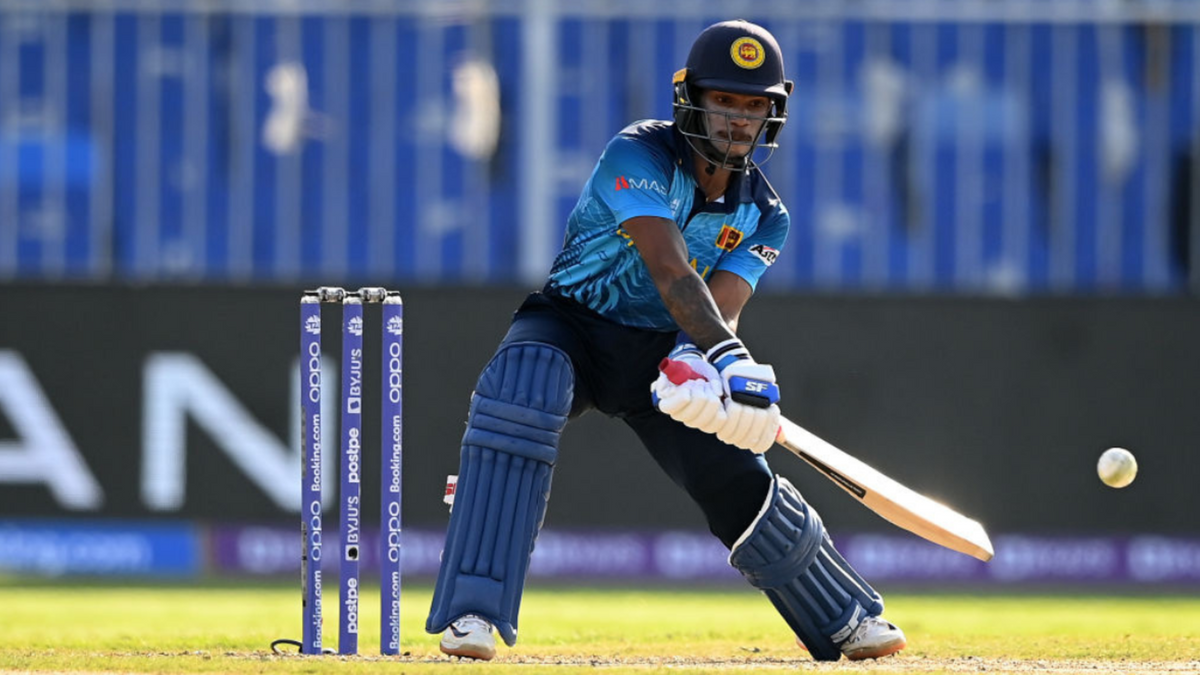
Pathum Nissanka is a supremely talented top-order batter. His T20 career, however, has been a curious one by modern standards, writes Naman Agarwal.
Subscribe to the Wisden Cricket YouTube channel for post-match analysis, player interviews, and much more.
Chasing 189 in their fourth match of LPL 2023 on August 7, Colombo Strikers won the game with one ball to spare thanks largely to a 14-run cameo off four balls by Mohammad Nawaz in the last over.
Pathum Nissanka played a part in laying the platform for the chase, sharing a century opening stand with Babar Azam, who scored his 10th T20 hundred. Whether Nissanka’s role was positive or negative, though, will be up for debate.
Nissanka scored 54 off 40 balls at a strike rate of 135, when the team needed to score at 158. Granted, not every batter needs to strike above the required rate and that batting works in partnerships, as it did in this game, with Babar striking at 176 and covering the gap. However, this has been a recurring trend with Nissanka in his close-to-a-hundred-match T20 career now.
His career T20 strike rate stands at 115 from 86 games. Since 2018, the year when Nissanka made his T20 debut, only one batter has scored more runs than him at a lower strike rate in T20 cricket: Bangladesh’s Mohammad Naim, who has 34 runs more than Nissanka at a strike rate of 110 at the time of writing.
While Naim last played a T20I for Bangladesh in August 2022, Nissanka has been a regular part of Sri Lanka’s XI in the format, and featured in their last T20I against New Zealand in April 2023 as well.
Only 25, Nissanka may turn a corner soon in T20 cricket. He has already had a good start to his Test and ODI careers, where he averages 38.35 and 40.77 respectively. Going by modern standards, however, it is strange that Sri Lanka persisted with him in the shortest format for 42 games now.
In an era and a format where teams look to get off the block as soon as possible, where the value of a wicket keeps diminishing with almost every passing tournament, Nissanka is the old-school one-day cricketer that teams with fragile batting lineups prefer to have. He provides stability and consistency as far as run-scoring is concerned, but isn’t the best at shifting gears and going on all-out attacks.
Nissanka’s strike rate inside the powerplay in T20s is 102, and he hits a boundary every 7.38 balls. For perspective, Luke Ronchi, who tops the list, thit a boundary every 3.49 balls inside the first six overs.
There are several successful T20 batters who are not fast starters but have the ability to accelerate and make it up, but Nissanka is yet to tick that box either. Only one of his T20I thirties has been at a rate above 150.
If you extrapolate it to his entire T20 career, he has only three fifties at that pace – one in the LPL, and the others in Sri Lanka’s domestic T20 tournament. The latter two came at strike rates less than the innings strike rates.
This is the third edition of the Lanka Premier League for Nissanka. Until this season, his strike rate in the tournament stood at 112. From four games this year, he has scored 92 runs at 112, barely improving on his past records.
Nissanka came into the T20I side at a time when they were searching for stability at the top of the order. From 2018 till his debut, only one Sri Lankan opener had an average greater than 22. With his technique and temperament, Nissanka held the top order together. It was a safe, defensive move in a format that is built around attack. It might have been required at the time, but is unlikely to be sustainable in the long run.
It is clear that Sri Lanka look at him as a long-term, all-format prospect. While they are right about the first part, Nissanka has a lot of work to do on his T20 game and he has to do it pretty soon if he has to vindicate the second part as well.








